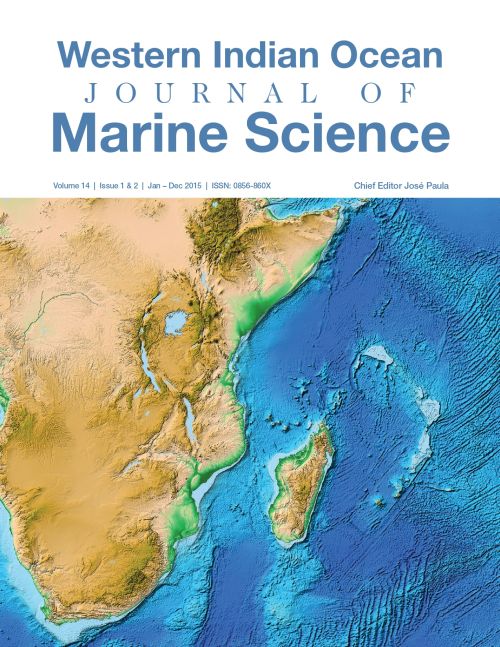 Western Indian Ocean Journal of Marine Science
Western Indian Ocean Journal of Marine Science
Journal / Western Indian Ocean Journal of Marine Science /
Vol. 14 No. 1&2 (2015) / Articles
We assessed the richness, diversity and community structure of demersal fish and benthic invertebrates caught by trawl nets along the deep shelf and upper continental slope of the Southwest (SW) Indian Ocean. Four depth-stratified surveys were undertaken in 2011-2012, in Kenya, Tanzania, Mozambique and southwestern Madagascar. The effects of depth, country (proxy for latitude) and the Mozambique Channel (African shelf versus Madagascar) on catch composition were considered. Of 243 genera identified from 206 trawls, the most were teleosts (55%), followed by crustaceans (18%), elasmobranchs (12%) molluscs (10%) and other invertebrates (5%). Species richness was highest in Mozambique, and at 300-399 m depth. Based on Shannon’s entropy, diversity was greatest at 200-299 m depth and in Kenya, decreasing southwards along a latitudinal gradient. Genera contributing most to the dissimilarity in the structure of African shelf and Madagascar communities were greeneye fishes Chlorophthalmus and knife prawns Haliporoides. Restricting analysis to across-channel samples from Mozambique and Madagascar recovered a similar result. The information provided is new to the SW Indian Ocean region, and an important step towards understanding diversity trends, for the prioritization of conservation needs and development of deep-water fisheries management strategies.
Journal Identifiers
eISSN: 2683-6416
print ISSN: 0856-860X






